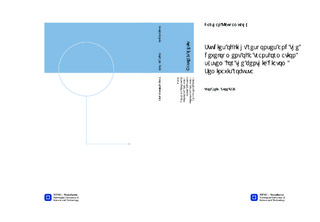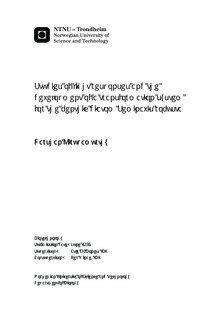| dc.description.abstract | Diatoms are a divergent group of organisms with a complex evolutionary background, and belong to the Heterokonta group phylogenetically. Diatoms have gone through several endosymbiotic processes with both green algae and red algae, and have acquired a complex genome. Some of the genes and protein found in diatoms are similar to those found in plants and green algae, while others show similarities to animals (metazoa), yeast, bacteria and other unicellular microorganisms. This genomic diversity could be one of the reasons why diatoms dominate the primary production in many marine and fresh water ecosystems. Seminavis robusta is a benthic diatom that lives on the bottom sediments and has a bilateral symmetry. One of the advantages with S. robusta is the size; it is bigger than both Phaeodactylum tricornutum and Thalassiosira pseudonana which have been fully genome sequenced. S. robusta also have two mating types, which means that it is possible to do breeding between individuals and keep a pedigree. S. robusta has therefore been considered a good model organism for studies on benthic diatoms. In this study two experiments were done on S. robusta. The first experiment was to make a vector construct that could be used to transform S. robusta. The endogenous AtpBE/D promoter in S. robusta expressing the ATP synthase beta subunit and ATP synthase epsilon or delta (in this thesis referred to as epsilon) subunit was chosen as promoter for the construct. The AtpBE promoter was chosen because of its small size and because it is bidirectional and can express two genes simultaneously. The AtpBE promoter and the belonging AtpB and AtpE terminators were isolated from genomic DNA from S. robusta and cloned into the pBluescript (KS+) vector. The nourseothricin acetyltransferase (Nat1) gene was chosen as selectable maker. Nat1 gives resistance to nourseothricin, the gene was modified and synthetically synthesized to correspond to the tRNA abundance of S. robusta. The Nat1 gene was cloned into the expression of the AtpE direction of the promoter while Yellow Fluorescence Protein (YFP) was cloned into the AtpB side of the promoter. YFP was included to check the expression capability of the AtpB promoter direction. Results from transformation attempts showed that only Nat1 was expressed and translated in the cells. No YFP or YFP mRNA was detected, indicating that the gene was not transcribed. The second experiment performed on S. robusta was a light experiment, where cells in exponential growth phase were kept in dark for 12 hours before eight flasks were exposed to blue light (BL, 80 µmol photons m-2s-1), four flasks were set for 0,5 hour and the other four for 6 hours. After the exposure cells were harvested and RNA was isolated. The same procedure was done in white light (WL, 100 µmol photons m-2s-1) for 0,5 and 6 hours. The gene expressions from the treatments were studied with RT- qPCR and microarray technology. The study showed that some of the genes coding for Light Harvesting Complex proteins (LHCs), Aureochromes, Aureochrome-like proteins and Heat Shock Transcriptions factors (HSFs) had strong responses to the light treatments. | nb_NO |

